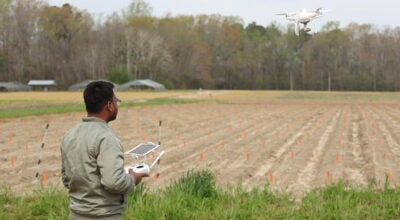Suffolk Transit looks to expand regional connections
Published 8:44 pm Monday, November 30, 2020
|
Getting your Trinity Audio player ready...
|
After developing a transit plan, Suffolk Transit will be looking to extend its connections in the city and in targeted areas of the region, according to the city’s Director of Public Works.
Speaking before a recent Hampton Roads Transportation Planning Organization meeting, L.J. Hansen said Suffolk Transit is evaluating the plan with an idea toward making connections with regional partners and expanding service areas to more rural communities in the city and in Windsor.
Hansen said the city has applied for a SmartScale grant to start service between the Victory Crossing Bus Transfer Station in Portsmouth and the industrial area west of downtown Suffolk.
He said he has heard from the city’s larger businesses that workforce development is essential to them, and noted there used to be a route between the two areas when there was a grant for it. Hansen said the route is important enough that the city wanted to go back and re-establish it.
“As we’ve reached out and talked to our partners in business, one of the essential elements is always job force,” Hansen said. “We recognize that there’s a job force located in the city of Suffolk, but there’s a job force also located outside the city of Suffolk.
“And we have this large geographic barrier, the (Great) Dismal Swamp, that really cuts us off from easy transportation. So we felt that it would be appropriate to establish some type of an express system that would allow folks to get from an HRT hub, which the closest one to us would be that Victory Crossing hub, directly to our job employment center that is located in that area.”
Hansen said there are also preliminary discussions between the city, HRT and industrial partners in North Suffolk as Amazon facilities open in Northgate Commerce Park in the city and a few miles away in Chesapeake.
“We’re looking to see how to make connections for those areas as well,” Hansen said.
Hansen also said the town of Windsor and its residents have expressed interest in using Suffolk Transit to go to and from Suffolk for medical appointments and would look at extending service there in the future. A trio of on-demand zones have been identified in the city — one in the Chuckatuck area, another off of U.S. Route 58 and another along U.S. Route 13 that could support some kind of service.
“Those are areas that are identified for possible on-demand service,” Hansen said, “where the population density isn’t significant enough to warrant having regular service, but perhaps having on-demand service would allow us to build up a ridership level that ultimately could foster more frequent service.”
Currently, Suffolk Transit, which the city owns and maintains, operates six fixed routes, six days per week.
Previously, it looked to expand service and provide loop service, but now, the city is looking to modify service areas from larger loops to provide more frequent service. It has two routes that connect riders to Hampton Roads Transit and allow them to connect to routes in Chesapeake — one of those Suffolk Transit stops is at Chesapeake Square Mall, and another where Hampton Roads Transit extends service to Suffolk Transit’s joint operations facility in North Suffolk.
Ridership numbers for Suffolk Transit have been on a steady increase since fiscal year 2013, its first full year, when ridership reached 57,814, to fiscal year 2019, when ridership was 128,845 before falling in fiscal year 2020 to 111,144. The most recent decline is attributed in part, he said, to COVID-19.
“We’re still seeing a little bit of a reduction, but by and large, not as significant as some of the larger systems,” Hansen said. “And that probably stems from the fact that most of our ridership is not choice ridership. These are folks that are predominantly dependent upon transit.”
In fiscal year 2021, Suffolk Transit is getting 47.4% of its funding locally, 33% federal, 12.4% from state operating assistance, another 2.1% from state capital assistance and 0.5% from bus advertising. It unveiled a new Transit Development Plan in December 2019, as the General Assembly had requested that Suffolk Transit put together a plan that was consistent with HRT and the Williamsburg Area Transit Authority.
Hansen said it wanted to find overlapping interests in which they could complement each other’s services.
“We’re very anxious to work with HRT, with WATA, to develop opportunities to just create that network that makes transit seamless for the rider,” Hansen said. “And we’ve already identified some possible ways that we might be able to do that.”
They include complementary fare payment and intelligent transportation solutions such as being able to find each other’s services through their respective apps.
One of Suffolk Transit’s priorities for it to grow and be meaningful to riders, and support economic development, is to realign routes to make services more direct and accessible. It wants to move away from loop-style routes, Hansen said.
Hansen said another priority identified in the plan is to expand weekday hours and add Saturday service to more areas, as well as increasing the frequency of service on some corridors to every 30 minutes. He said riders are also interested in more commuter and on-demand services.






